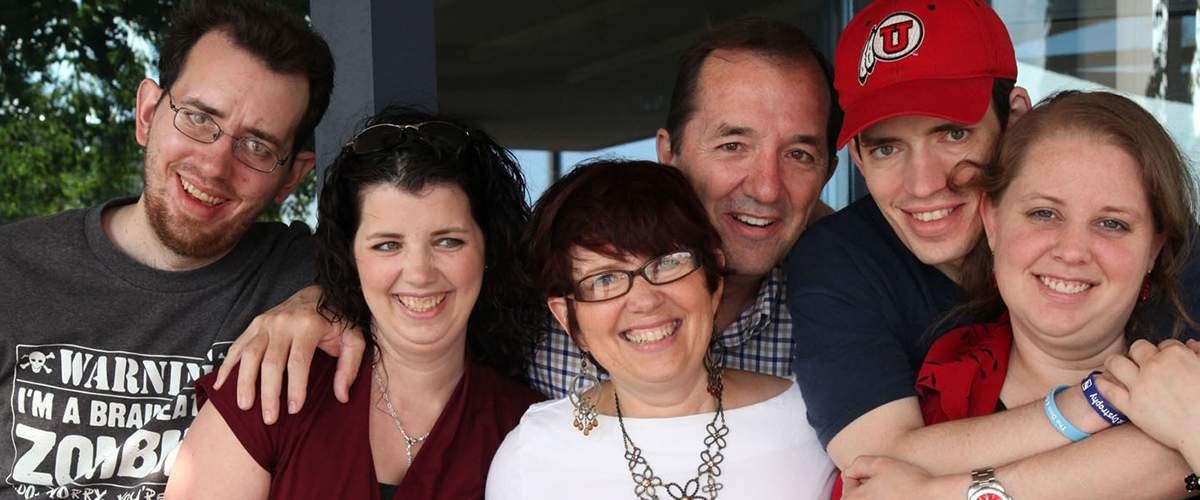Patterns:
-
Major and clinically relevant eye manifestations in DM1 can include the following: cataracts, eyelid ptosis and incomplete eyelid closure, eye movement abnormalities, retinal changes and low intraocular pressure.
-
Visual impairments with DM1 are most often caused by cataracts. Cataracts in DM1 may progress faster than usual cataracts and may present with early-onset cataracts. Cataracts before the age of 55 or a family history of premature cataracts suggest a diagnosis of DM1 or DM2 in individuals with muscle symptoms.
-
Glare and blurriness of vision develop as lens opacities progress to stellate (starlike) cataracts and eventually to mature cataracts, which may be indistinguishable from more common types of cataracts.
Symptoms:
-
Symptoms of cataracts and other eye manifestations in DM1 (see above).
Diagnosis:
-
Discuss the following tests with your doctor:
-
DM1 ocular manifestations via a slit-lamp examination as part of an annual eye exam.
-
Eyelid ptosis; if ptosis becomes severe and interferes with vision, intervention, such as eyelid “crutches” that can be inserted into glasses, may be warranted. Try crutches as a remedy for ptosis before eyelid surgery is considered, due to anesthesia risks and concomitant eye closure weakness.
-
Treatment:
-
Surgery to remove cataracts, but local anesthesia is preferred so that complications associated with general anesthesia can be avoided.
-
Refer to:
-
Surgical ophthalmologist when cataracts interfere with the ability to meet the needs of daily living and surgical removal of the opaque lens with intraocular lens implantation is indicated. Ensure anesthesia risks and side effects are clear.
-
Ophthalmologist for regular follow-up re: weakness of eyelid closure. Ophthalmic lubricants for dry eye can be considered.
-
Patterns:
-
Major and clinically relevant eye manifestations in DM2 can include the following: cataracts, eyelid ptosis and incomplete eyelid closure, retinal changes and changes in intraocular pressure.
-
Visual impairments are most often caused by cataracts.
-
Cataracts in DM2 may progress faster than usual cataracts, thus individuals may present with early onset cataracts. Cataracts before the age of 55 or a family history of premature cataracts suggest a diagnosis of DM in individuals with muscle symptoms.
Symptoms:
-
Symptoms of cataracts and other eye manifestations in DM2 (see above).
Diagnosis:
-
Discuss the following tests with your doctor:
-
DM2 ocular manifestations via a slit-lamp examination as part of an annual eye exam. Regular ophthalmological examinations after the cataract surgery as cataracts may recur.
-
Eyelid ptosis; if ptosis becomes severe and interferes with vision, intervention, such as eyelid “crutches” that can be inserted into glasses, may be warranted. Try crutches as a remedy for ptosis before eyelid surgery is considered, due to anesthesia risks and concomitant eye closure weakness.
-
Treatment:
-
Surgery to remove cataracts can be performed, but local anesthesia is preferred so that complications associated with general anesthesia can be avoided.
-
Refer to:
-
Surgical ophthalmologist when cataracts interfere with the ability to meet the needs of daily living, and surgical removal of the opaque lens with intraocular lens implantation is indicated. Ensure anesthesia risks and side effects are clear.
-
Ophthalmologist for regular follow-up to evaluate weakness of eyelid closure. Ophthalmic lubricants for dry eye can be considered.
-
Patterns:
-
Major and clinically relevant eye manifestations in congenital and childhood-onset DM1 can include hyperopia, eyelid ptosis, incomplete eyelid closure, strabismus, and other eye movement abnormalities.
-
Cataracts, while a common concern in adults, are almost never seen in children.
-
Bilateral eyelid ptosis is a frequent feature. In severe cases, it can obstruct vision and may require surgical or nonsurgical intervention.
-
Weakness of eyelid closure muscles is also a common problem and can cause corneal damage.
-
Otic infections during infancy manifested as an infection of the upper respiratory tract are frequent, and typically require surgical interventions, such as uni or bilateral tympanostomy.
Symptoms:
-
Signs of upper respiratory tract infections, especially when manifesting as an otitis media.
Diagnosis:
-
Discuss the following tests with your doctor:
-
LETTERS Baseline audiometry, especially at school age.
-
Treatment:
-
Signs of strabismus or other ocular misalignment using a cover/uncover test. Persistent dysconjugate gaze in childhood can result in amblyopia.
-
Eyelid ptosis; if ptosis becomes severe and interferes with vision, intervention such as eyelid “crutches” that can be inserted into glasses may be warranted. Try crutches as a remedy for ptosis before eyelid surgery is considered, due to anesthesia risks.
-
Refer to:
-
An optometrist for examination at diagnosis and thereafter at least annually to identify hyperopia, astigmatism, strabismus.
-
An ENT if frequent ear infections are present.
-
An ophthalmologist for regular follow-up if eye movement abnormalities or weakness of eyelid closure are putting vision at risk. Ophthalmic lubricants for dry eye can be considered.
-

